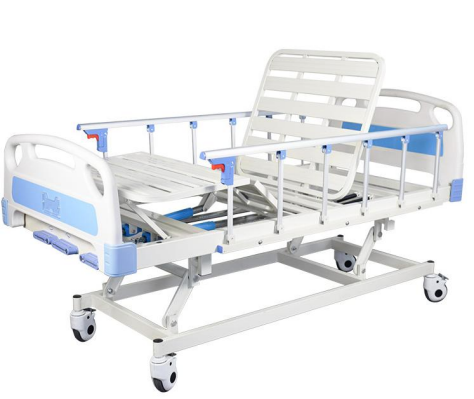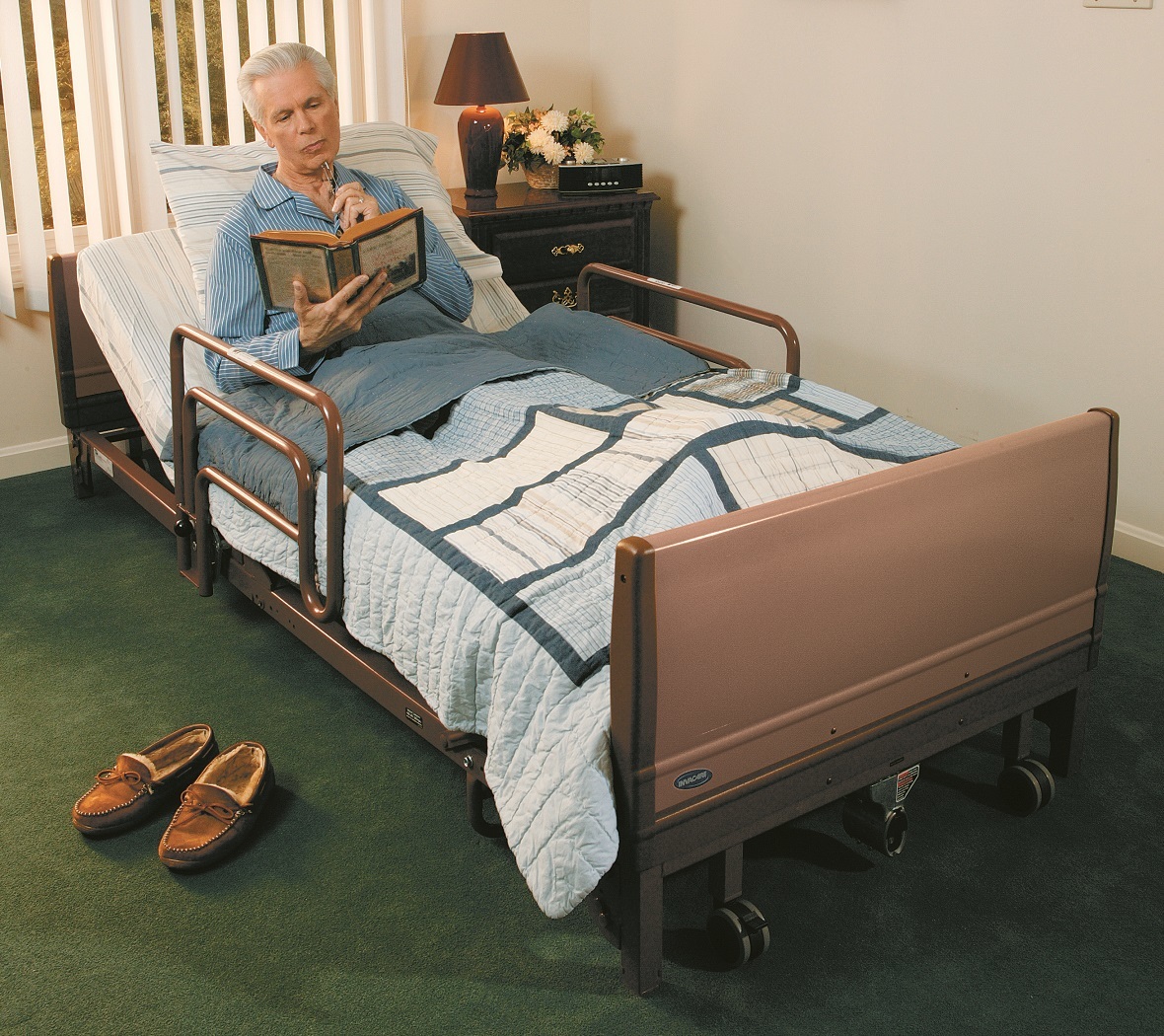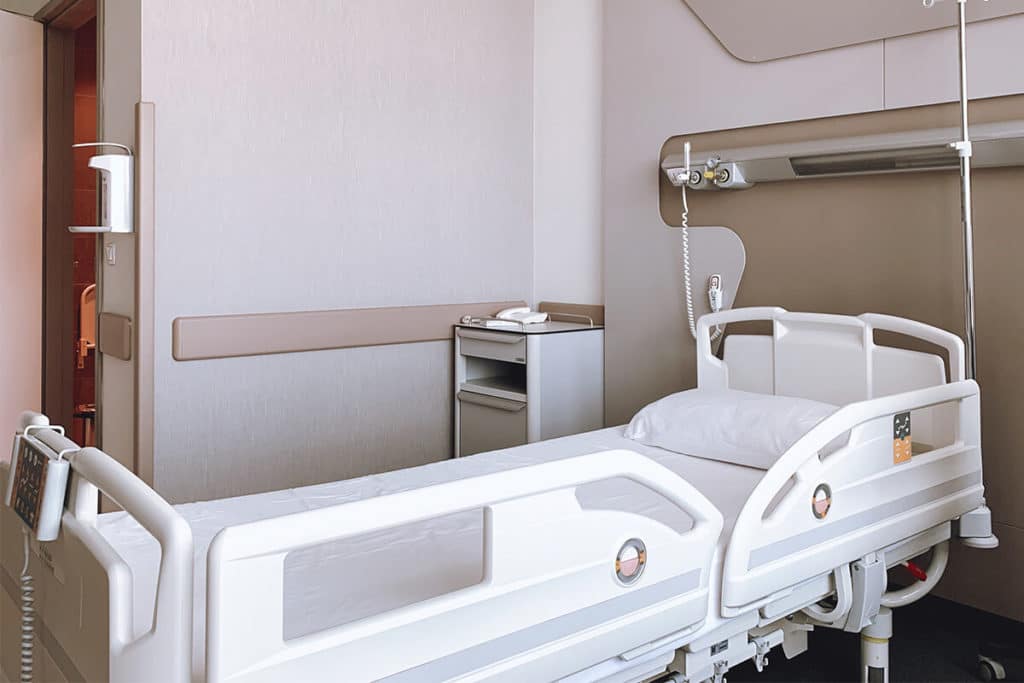5 Easy Facts About Hospital Beds For Home Use Shown
5 Easy Facts About Hospital Beds For Home Use Shown
Blog Article
More About Hospital Beds For Home Use
Table of Contents8 Simple Techniques For Hospital Beds For Home UseThe smart Trick of Hospital Beds For Home Use That Nobody is DiscussingThe Single Strategy To Use For Hospital Beds For Home Use9 Simple Techniques For Hospital Beds For Home UseThe 7-Second Trick For Hospital Beds For Home Use4 Easy Facts About Hospital Beds For Home Use DescribedThe Of Hospital Beds For Home Use
There are 3 major kinds of medical facility beds: handbook, semi-electric, and fully-electric. These beds make use of hand cranks to change the bed's elevation and raise and reduce the head and the foot.
Semi-electric beds have an electrical motor to raise and decrease the head and foot portions of the bed (hospital beds for home use). Full-electric beds have an electrical motor that can increase the head and foot areas of the bed as well as the whole height and positioning of the bed.
Some Known Factual Statements About Hospital Beds For Home Use
There are several types of hospital beds, each created to satisfy certain patient needs. Below are some typical kinds: This is the most common type of healthcare facility bed, developed for general clinical use.
Lower to the ground than a common bed. This sort of bed is developed for bigger clients, with a bigger frame and higher weight capability than a conventional bed. This sort of bed is made specifically for youngsters, with smaller sizes than a basic bed. Special attributes such as full size side rails and cartoon style.
This kind of bed is developed for seriously unwell individuals that need open monitoring and specialized medical devices such as ventilators and infusion pumps. This type of bed is created for use during labor and distribution, with adjustable settings and features to support the mommy and baby throughout the birth process.
Rumored Buzz on Hospital Beds For Home Use
Multiple feature and the accessories do expanding traction to different parts of the vertebra and the extremities without relocating the human body. These are just a few examples of the types of health center beds offered. The details sort of bed utilized will depend on the patient's problem, clinical needs, and various other aspects.
Here is the point you need to know. A one-function medical facility bed is a clinical bed that enables an individual to move just the head or foot section up or down. A 2 feature healthcare facility bed normally describes a type of medical bed that has 2 flexible functions to assist clients in healthcare facilities or care facilities.

Hospital Beds For Home Use Fundamentals Explained
A 7-function ICU bed is a sort of clinical bed that gives numerous flexible features to support seriously unwell clients in an intensive care unit (ICU) (hospital beds for home use). The 7 features commonly include: Back-rest modification: The backrest can be gotten used to different angles to aid the patient stay up or rest pleasantly
Elevation change: The bed can be raised or lowered to make it easier for people to enter and out of bed, and for caretakers to offer care. Trendelenburg setting: The entire bed can be slanted to promote blood circulation and blood circulation in the body. Reverse Trendelenburg setting: The bed can additionally be tilted in the contrary instructions to advertise blood circulation and flow in the top body.
While more cost effective than electric versions, these beds need exertion for changes. The major advantages of hand-operated beds are their cost and integrity, as they do not depend on electricity. The demand for hand-operated effort can be a constraint in situations where quick changes are essential or where caretakers face physical challenges.
How Hospital Beds For Home Use can Save You Time, Stress, and Money.
They are well-suited for individuals who require minimal repositioning for comfort or clinical demands. Semi-electric healthcare facility beds supply an equilibrium of handbook and electrical controls. The head and foot areas are typically adjusted with electric controls, while the height is changed manually. These beds provide an ideal center ground in between handbook and fully electric choices, using convenience of use without the full expense of electric models.
Semi-electric beds are try these out fit for patients who require moderate adjustments to the head and foot sections but can handle without constant height adjustments. This makes them a cost-effective service for those seeking comfort and convenience without the requirement for consistent repositioning. Fully electric health Visit Website center beds include electric controls for smooth changes to the elevation, head, and foot sections.
Specialized health center beds, such as ICU beds, long-lasting care beds, and bariatric beds, are meticulously made to resolve details medical needs. These beds use tailored treatment for diverse client teams, enhancing both end results and convenience. In the complying with areas, we will certainly discover the primary sorts of specialized medical facility beds, detailing their details advantages and applications.
With years of experience in manufacturing electric direct actuators - hospital beds for home use and close cooperation with the healthcare market, TiMOTION is well-positioned to give trustworthy healthcare solutions. Our vertically integrated business handles every step of the production procedure, from design to actuator assembly, guaranteeing we supply exceptional value and personalized services tailored to your specific needs
The Ultimate Guide To Hospital Beds For Home Use

To get more information concerning incorporating these innovations into your products, contact us today. Further reading:.
Data is sourced from the Medicare Expense Record.

Some Ideas on Hospital Beds For Home Use You Should Know
A hospital bed is a bed designed especially for clinical functions. It is not just a place for clients to relax, however additionally a platform for clinical operations. Unlike average home beds, medical facility beds typically have flexible features, which can assist in medical personnel to make numerous modifications according to the demands of individuals, such as transforming the height, disposition, and assistance angle of the back and legs of the bed.
Report this page